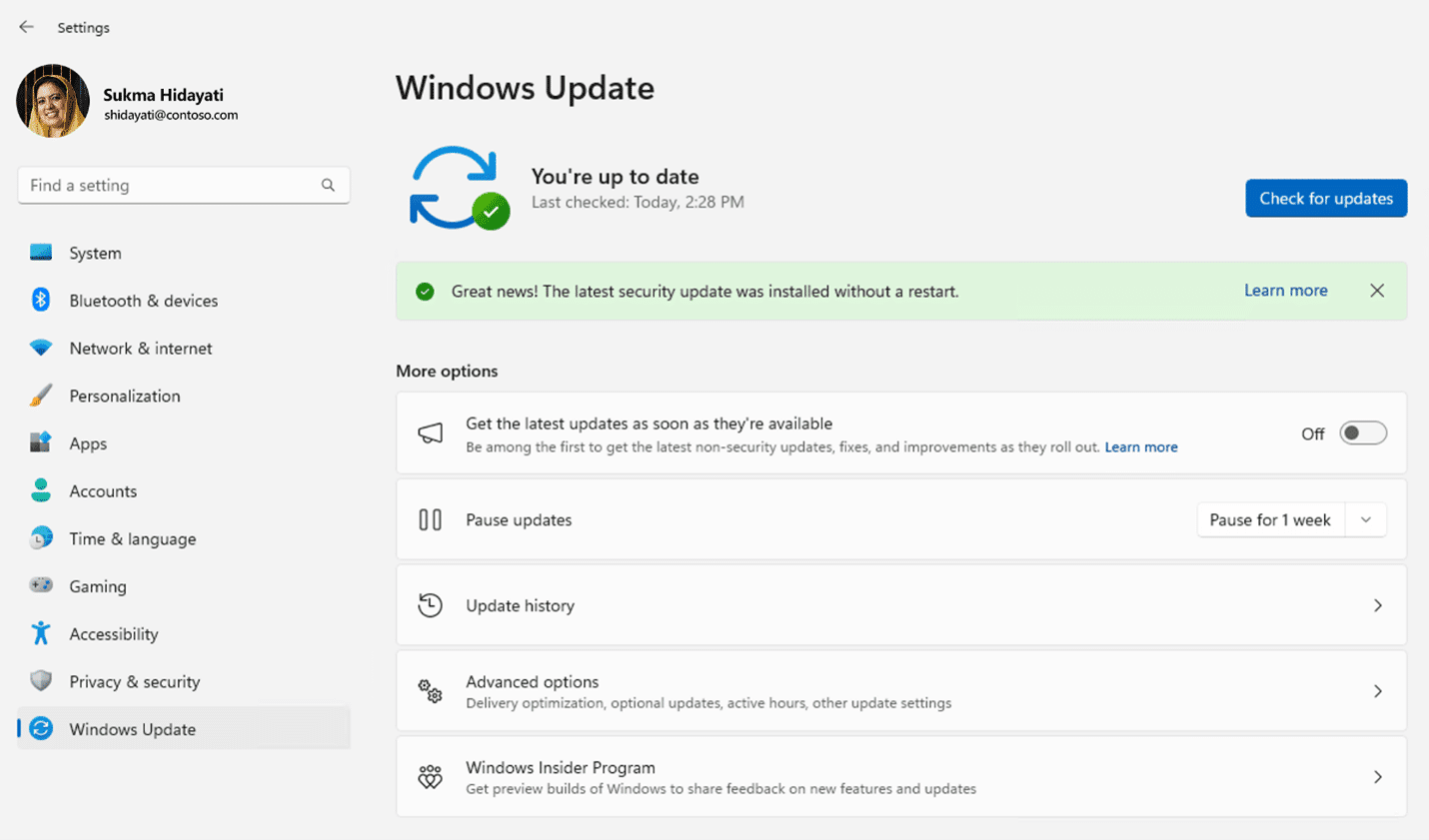Microsoft launches its hotpatch system for devices running Windows 11 Enterprise 24H2, reducing restarts and applying security instantly.
Microsoft has announced the general availability of the Hotpatch update system for Windows 11 Enterprise customers, version 24H2. This new approach allows security patches to be applied immediately without the need to restart the computer in most cases, representing a key advancement in cybersecurity and operational continuity for business environments.
What is Hotpatch?
Hotpatching enables critical patches to be installed directly into the system memory without interrupting the user’s session. Unlike the traditional model, which requires frequent restarts after security updates, with Hotpatch, restarts are reduced to only four times a year, aligning with the baseline months: January, April, July, and October.
During the two months following each baseline update, security patches are applied hot, without disrupting the user’s work or requiring a restart of the operating system. This way, businesses and institutions can strengthen their security posture without affecting productivity.
Key Benefits of the System
- Immediate application of critical patches.
- Fewer interruptions: users can continue working without monthly restarts.
- Security equivalent to standard Windows updates.
- Reduced risk of vulnerability exploitation, as it does not rely on pending restarts.
“Hotpatch has been a game changer in keeping our devices secure without interrupting work,” explains Michael Meier, senior systems administrator at Krones AG. “Now we understand the real value of applying security instantly.”
Which Devices are Compatible?
The feature has been available since April 2 for:
- Devices with x64 CPU (Intel or AMD) running Windows 11 Enterprise, version 24H2 (Build 26100.2033 or higher).
- Microsoft subscribers with licenses for Windows 11 Enterprise E3/E5/F3, Education A3/A5, or Windows 365 Enterprise.
- Centralized management through Microsoft Intune with specific policies for Hotpatch.
- Virtualization-based security (VBS) enabled.
Devices with Arm64 architecture are still in public preview and will require additional configuration via the registry editor or future CSP policies.
How Hotpatch is Managed
Hotpatch updates are integrated with Windows Autopatch and managed from the Intune admin center. Microsoft has streamlined the process with a Windows quality policy that automatically detects whether devices are eligible to receive these hot patches.
The update schedule is as follows:
| Quarter | Patch with Restart (Baseline) | Hotpatch (No Restart) |
|---|---|---|
| 1 | January | February, March |
| 2 | April | May, June |
| 3 | July | August, September |
| 4 | October | November, December |
A Step Towards Continuous Security
With this technology, Microsoft addresses the challenge of keeping millions of devices secure without sacrificing user experience. In a context where attacks and vulnerabilities spread within hours, minimizing the “exposure window” is essential. Hotpatching, already in use in Windows Server, now sets a new standard in enterprise clients as well.
Source: Windows 11


